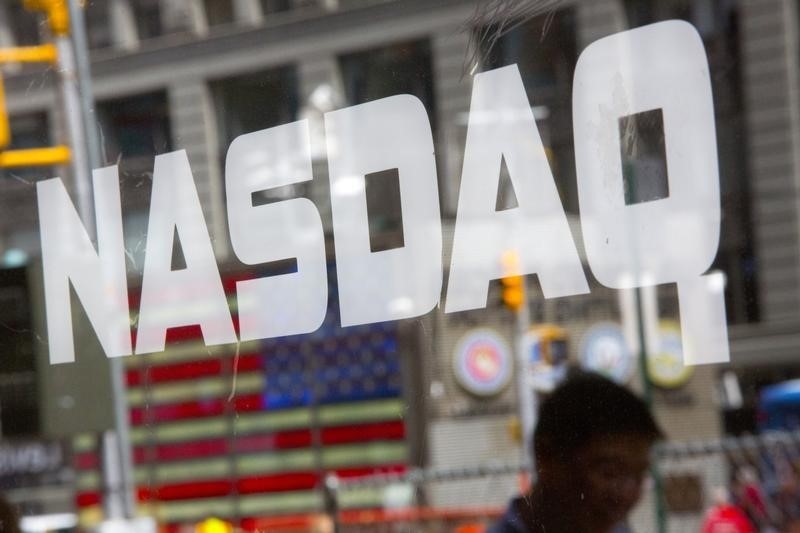(Bloomberg) -- There are more signs of possible trouble ahead for high-flying technology stocks, this time from gauges of expected volatility.
One alert stems from the widest spread since 2004 between the Cboe NDX Volatility Index, a measure of implied equity swings for the Nasdaq-100, and the counterpart so-called “fear gauge” for the S&P 500. Another comes from unusual simultaneous gains in the technology index and the NDX recently.
This kind of pronounced shift in the relationship between the two volatility indexes tends to correspond with absolute and relative underperformance of the Nasdaq 100, particularly over three months, according to Julian Emanuel, head of equity and derivatives strategy at BTIG LLC.
The surge in megacap technology firms led the stimulus-fueled U.S. equity rally from March’s lows, a climb that weathered lingering concerns about the longer term economic impact of rising Covid-19 cases. The Nasdaq-100 is up 22% so far this year, while the S&P 500 is still down 1%, and the question now is whether technology stocks will maintain their leadership.
At one point on July 13, the Nasdaq-100 was up 1% while the Cboe NDX Volatility Index climbed 8% -- a situation which had never happened before, according to Jason Goepfert, president of Sundial Capital Research Inc.
The fact that options traders are pricing in higher volatility despite record highs for the Nasdaq is among reasons for “caution,” Goepfert wrote in a note, as is the reversal that eventually left the technology measure in the red on Monday.
Tallbacken Capital Advisors LLC Chief Executive Officer Michael Purves recommends hedges using put options on the Technology Select Sector SPDR Fund following the recent gains in the sector.
Investors may be guilty of “near-term complacency” ahead of the second-quarter earnings seasons, Purves wrote in a note.
©2020 Bloomberg L.P.
